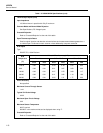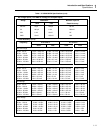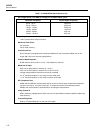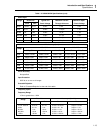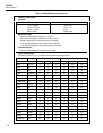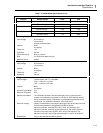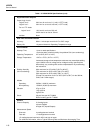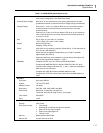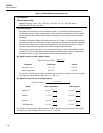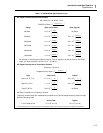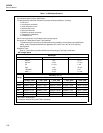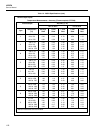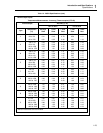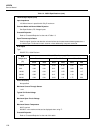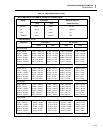
HYDRA
Service Manual
1-18
Table 1-3. 2620A/2625A Specifications (cont)
2620A Options
IEEE-488 (Option -05K)
Capability codes:SH1, AH1, T5, L4, SR1, RL1, PP0, DC1, DT1, E1, TE0, LE0 and C0
Complies with IEEE-488.1 standard
Crosstalk Rejection
AC signals can have effects on other channels(crosstalk). These effects are discussed here by
measurement function. These numbers should only be considered as references. Since crosstalk
can be introduced into a measurement system in many places, each setup must be considered
individually.
The effect of crosstalk could be much better than shown for "Typical"; in extreme cases, the effect
could be worse than the "Worst Case" numbers.In general, the "Worst Case" information assumes
that none of the guidelines for minimizing crosstalk(Section 5) have been followed; the "Typical"
information assumes that the guidelines have been followed where reasonable.
These numbers assume that input L (low) is tied to earth ground; refer to "Using Shielded Wiring"
in Section 5. For dc volts and thermocouple temperature measurements, a source impedance of 1
kΩ in series with the H (high) input is assumed (except where otherwise noted.)
AC Signal Crosstalk in a DC Voltage Channel
DCV Error Tatio (CTRR) =
VDC error
VACrms
()
Frequency Worst case Typical
50, 60 Hz, ±0.1%: 1.1 x 10
-7
2.0 x 10
-8
Other Frequencies: 3.8 x 10
-6
8.6 x 10
-7
For example, to find the typical effect of a 300V ac signal at 60 Hz on another channel for the 300
mV range, you would calculate: 300 X 2.0 X 10
-8
= 0.01 mV.
AC Signal Crosstalk into an AC Voltage Channel
ACV Error Ratio =
VACrms error
VACrms crosstalk x Frequency crosstalk
()
() ()
Range Ratio (worst case) Ratio (typical)
300.00 mV 4.8 x 10
-8
V
VxHz
1.4 x 10
-8
V
VxHz
3.0000V 1.1 x 10
-7
V
VxHz
3.0 x 10
-8
V
VxHz
30.000V 1.2 x 10
-6
V
VxHz
2.6 x 10
-7
V
VxHz
150.00/300.00V 1.2 x 10
-5
V
VxHz
3.4 x 10
-6
V
VxHz
For example, to find the typical effect of a 60 Hz, 220V ac signal on another channel for the the 300
mV range, you would calculate: 220 X 60 X 1.4 X 10
-8
= 0.18 mV.



